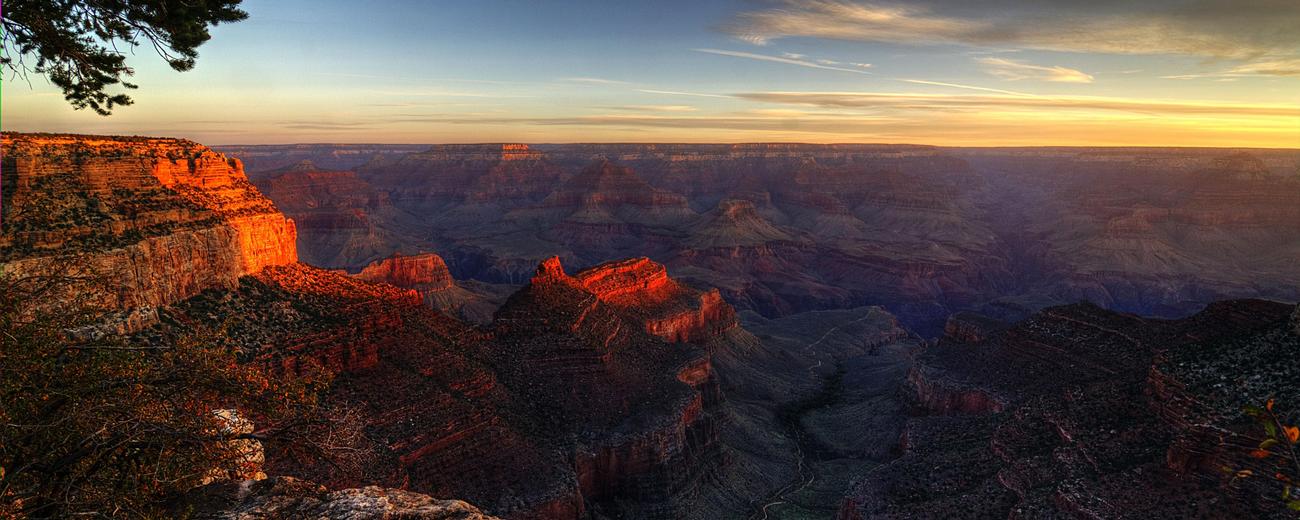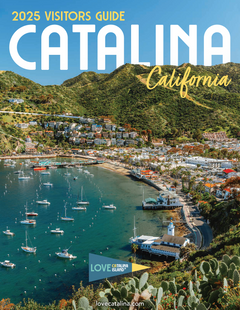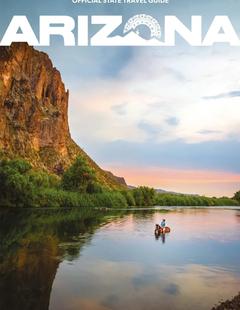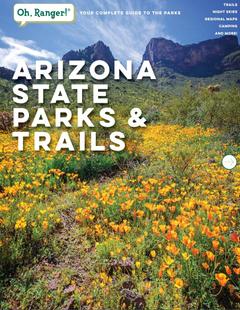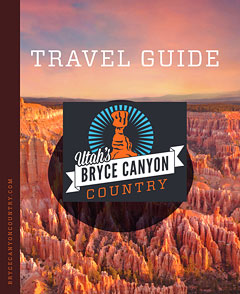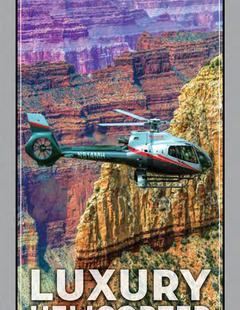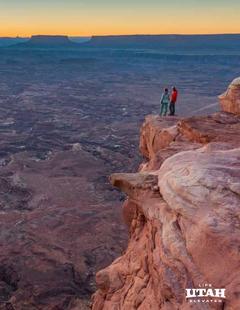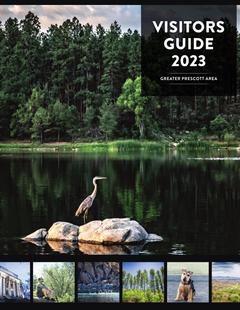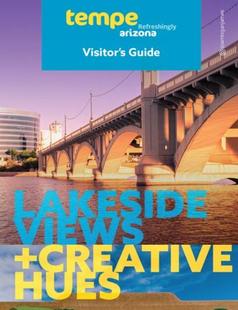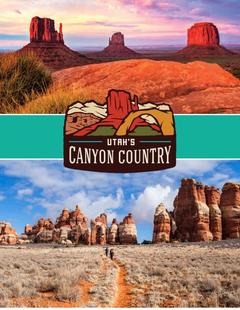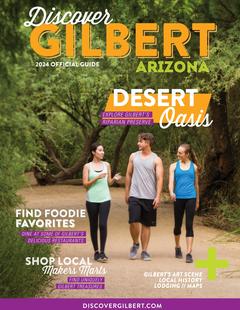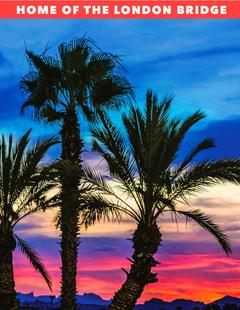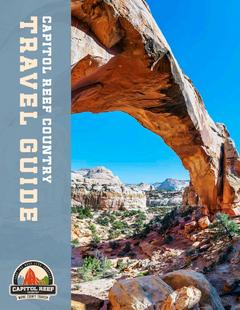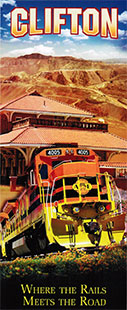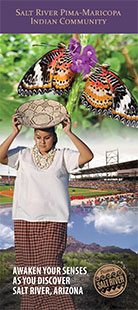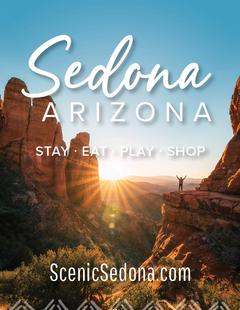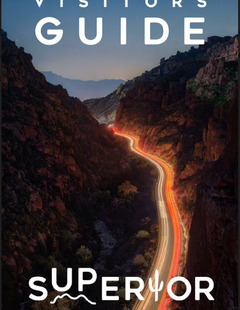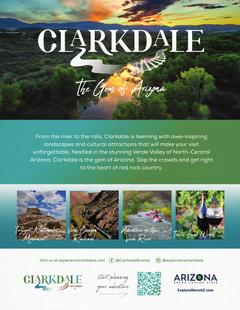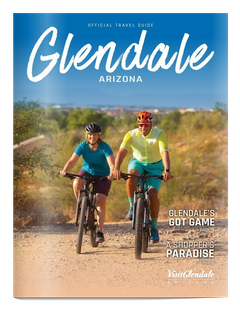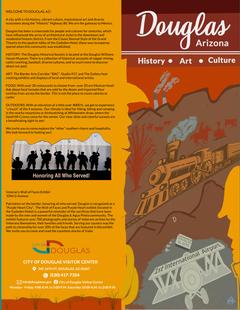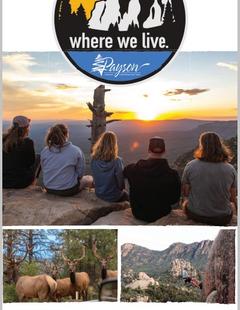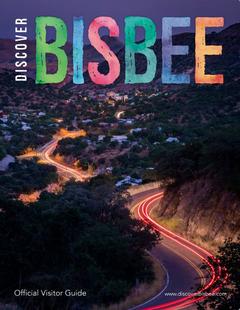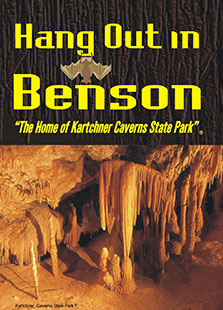The Grand Canyon is split into four distinct regions for visitors, the North and South Rims, the Inner Rim, and the Havasu Falls area. Take the time to orient yourself with the park by clicking through the options below and getting a better perspective of the best way for you to tackle the park.
Overview
Most visitors to the Grand Canyon drive to either the South Rim or North Rim to experience the canyon from above. You can walk or drive along portions of the rim to numerous overlooks. The Inner Canyon is defined as everything below the rims. You can hike, ride a mule, or raft on the Colorado to experience the depths of the canyon. The Havasu Falls area on the Havasupai Reservation is beautiful, but more difficult to reach and a much less visited area of the canyon.
Please note, the Grand Canyon attracts millions of visitors from around the world and as such you'll really want to plan in advance. Expect crowds during the spring, summer, and fall months. During these months, reservations for camping and lodging are essential. In fact, reservations for some activities or services need to be booked more than a year in advance. When visiting the South Rim, be sure to go to Canyon View Information Plaza, there you will find information to help plan your Grand Canyon visit.
The South Rim
 The South Rim of the Grand Canyon is the most popular destination for the casual canyon visitor and has all the amenities today's travelers expect. Just outside the south entrance to the park is the town of Tusayan with plenty of lodging, restaurants and other services. More memorable lodging is available inside the park at the South Rim's lodges and there are campgrounds both in and outside of the park.
The South Rim of the Grand Canyon is the most popular destination for the casual canyon visitor and has all the amenities today's travelers expect. Just outside the south entrance to the park is the town of Tusayan with plenty of lodging, restaurants and other services. More memorable lodging is available inside the park at the South Rim's lodges and there are campgrounds both in and outside of the park.
The attraction of the South Rim is of course the tremendous scenic overlooks into the canyon. Trails, both paved and unpaved, run along the rim to many of these overlooks. There are also a few scenic drives along the rim to the overlooks. - The East Canyon Drive is a 26 mile drive from the east gate to Grand Canyon Village with several overlooks of the canyon. The West Canyon Drive runs 7 miles west of Grand Canyon Village to Hermits Rest. The West Canyon Drive also has several overlooks but is open to private vehicles only during off season months.
The North Rim
 The North Rim receives less than 15% of the traffic that the South Rim does and is much less developed. Although the two rims are only separated by 10 miles, the trip by road is over 200 miles between them. While the South Rim is mostly desert, the North Rim is 1,000 feet higher and is heavily forested with pine, spruce and fir. The North Rim gets lots of snow and is closed to all but cross-country skiing during the winter months.
The North Rim receives less than 15% of the traffic that the South Rim does and is much less developed. Although the two rims are only separated by 10 miles, the trip by road is over 200 miles between them. While the South Rim is mostly desert, the North Rim is 1,000 feet higher and is heavily forested with pine, spruce and fir. The North Rim gets lots of snow and is closed to all but cross-country skiing during the winter months.
There are several lookouts that one can walk and drive to in order to get varying perspectives of the canyon. The North Kaibab Trail is the only maintained trail down into the canyon to the river. Mule and horse trips are also available. Many multi-park tours visit the North Rim when combining the trip with parks in Southern Utah like Zion National Park or Bryce Canyon National Park.
The Inner Canyon
 To experience the full wonder of the canyon, nothing can beat a trip down into the Inner Canyon. There are three ways to experience it -- on foot, atop a mule or horse, or aboard a raft on the Colorado River.
To experience the full wonder of the canyon, nothing can beat a trip down into the Inner Canyon. There are three ways to experience it -- on foot, atop a mule or horse, or aboard a raft on the Colorado River.
There are only three maintained trails that drop down to the river. The South Kaibab Trail and Bright Angel Trail start at the South Rim. The North Kaibab Trail descends from the North Rim. With one connector trail, these trails all end up at Phantom Ranch on the canyon's floor. Phantom Ranch (also known as Bright Angel Creek) offers a variety of accommodations including cabins, dorms and camping. Meal programs are also available and reservations are needed for all. Plan on two days to go down and up. Permits are required to stay overnight. Unmaintained trails into the canyon are more plentiful and lead to some great vistas. (Note: The Park Service provides very little to no support for these trails.)
 Pack trips on mules and horses are available from both rims. These trips take you to Phantom Ranch at the bottom of the canyon and then return the next day. You'll need to book these trips in advance.
Pack trips on mules and horses are available from both rims. These trips take you to Phantom Ranch at the bottom of the canyon and then return the next day. You'll need to book these trips in advance.
Arguably the most thrilling way to experience the Grand Canyon is on a guided river trip. The rapids through the canyon are huge and scenery is spectacular throughout. Trips generally last a week or two depending on put-in and take-out points. Select River Guides for a list of companies offering trips.
Havasu Falls on the Havasupai Reservation
 If your willing to invest the time, the blue green falls of the Havasu Creek are absolutely spectacular. The big falls are located just below the village of Supai but the whole area is exceptionally peaceful and scenic. Campgrounds need to be reserved and are located right near the Havasu Falls. It is a perfectly spectacular setting.
If your willing to invest the time, the blue green falls of the Havasu Creek are absolutely spectacular. The big falls are located just below the village of Supai but the whole area is exceptionally peaceful and scenic. Campgrounds need to be reserved and are located right near the Havasu Falls. It is a perfectly spectacular setting.
Access to this area is usually east of Williams (I-40) to Seligman, Peach Springs and then northeast to Hualapai Hilltop. From here you hike or horseback down to the village, the falls, and campgrounds. It is 9-1/2 miles in.
To hike or horseback here, you must be accompanied by a guide. Select hiking guide companies for a list of relevant companies.
Some Other Things To Know
Pets
Pets must be leashed at all times.
On the South Rim, leashed pets are allowed on trails above the rim, Mather Campground, Desert View Campground, Trailer Village and throughout the developed areas.
Pets are not permitted
- below the rim
- in park lodging (hotel rooms)
- or on park buses
The only exception would be a service animal. Persons wishing to take a service animal below the rim must check-in first at the Backcountry Information Center.
On the North Rim pets are not allowed other than the bridle trail (greenway) that connects the lodge with the North Kaibab Trail, and the portion of the Arizona Trail that continues north from there to the park entrance station.








